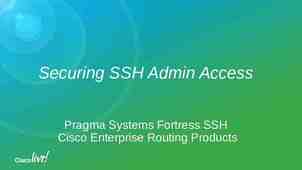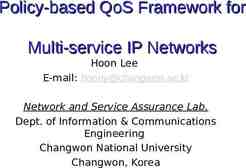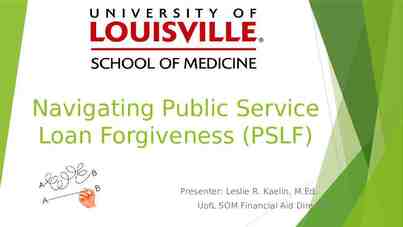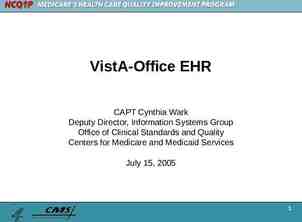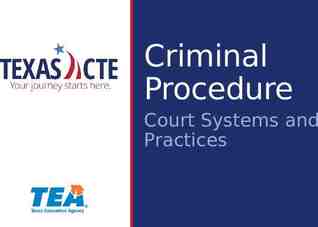AIRBORNE LAW ENFORCEMENT ASSOCIATION Safety Management System
57 Slides3.44 MB

AIRBORNE LAW ENFORCEMENT ASSOCIATION Safety Management System Workshop -------------------------------------------------------Keith Johnson Safety Program Manager

IHSS Safety is most important Need to collect data – – – – Collect flight hours Collect Serious Incident Information ALEA Incident Reporting System – Proposal Expedite Accident Reporting Increased training Reduce Accidents by 80% over 10-years Focus on Leadership Non-punitive reporting Accountability Accidents can be eliminated ALEA on International Helicopter Safety Team

The topic of the day

“SAFETY” It holds the key to our future It affects everything we do (SMS) Every accident affects everyone

SAFETY PRIORITIES SAFETY has the highest priority MISSION has a lower priority Each person is critical to eliminating accidents Inclusive communications chain*

SAFETY PRINCIPLES 1. 2. 3. 4. 5. 6. Always operate in the safest manner possible Never take unnecessary risks Safe does not mean risk free Key to safety is the i.d. and management of risk An absence of accidents does not necessarily equate to safety Familiarity and prolonged exposure without an incident leads to a loss of appreciation of risk How does this apply flying patrol?

Safety Goals Zero accidents Zero injuries Zero harm to environment Improve public perception of law enforcement aviation

An effective Safety Management System is essential to achieving & sustaining a zero accident.

ELEMENTS OF THE ORGANIZATION Flight Operations Ground Operations Maintenance Training Safety Safety Management System is all inclusive

ACCIDENT ELIMINATION Must be proactive – Reached plateau – Pilots focus on flying aircraft – Two person crews – Focus on risk management Adverse Trends – Identify and eliminate adverse trends – Incidents - Investigate & disseminate findings – Factory emergency procedures training Don’t reinvent the wheel No new causes of accidents Copy successful organizations Accreditation – Platinum Program

JUDGMENT & ACTION ERRORS Failure to manage known risks Mission urgency & risk taking – Will to succeed Flight profile unsafe – – – – Crew Qualifications Aircraft Suitability Mission Requirements Environment Judgment errors committed Failure to follow procedures Poor CRM Poor Aircraft Control – Over confidence – Loss of situational awareness

What is an SMS? Coordinated, comprehensive set of processes designed to direct and control resources to optimally manage safety. Makes safety management an integral part of the overall operations/business plan. Based on leadership and accountability.

What Does Having an SMS Give? Comprehensive Comprehensive approach Corporate Approach to to safety Safety Organizational Effective Organisation structure for for of & ownership Delivering Safety accountability for safety Robust effective Robust & Systems safety for management Assuring Safety processes We will now concentrate on describing the three key processes generically Once you understand these, the rest becomes more readily apparent But first some more definitions

Why is Having an SMS Important? 1. 2. 3. 4. 5. 6. 7. 8. Widely recognized as best practice Eliminates accidents Reduces costs Limits exposure (reduces total risk) Reduces probability of having an accident Reduces severity of risks Reduces exposure to risk Increases likelihood of completing the mission

1. Safety Management Plan Description of SMS components: 1. Definition of fundamental approach to safety a) b) c) 2. Clearly defined roles and responsibilities a) 3. Philosophical approach – Vision, Mission, Values Safety policy – SMS policy statement Business and department goals – set/reviewed annually Openly documented and briefed Top leadership involvement a) Safety is an agenda item, resource allocation, openness, involved in daily activities, promoting awareness

What should it look like? A Framework for Safety Management Checklist Security Policy Maint. Schedule Ops Manual QA Worksheets Alcohol & Drugs Policy Audit Plans Training Plan Safety FAA Regs Drills . HSE Policy Policy / Plan Process / Do Audits ERPs CRM No Structure Task / Check – Feedback - Action STRUCTURE

Safety Management Training Requirements Safety orientation for all new personnel Document competency requirements Document training requirements Have regularly scheduled safety meetings Key personnel educated on safety management best practices

JHSAT ACCIDENT CAUSATION JUDGMENT & ACTION ERRORS Fail to manage known risks – Mission urgency – Risk taking – Failure to follow standards Unsafe flight profile – – – – Crew qualifications Aircraft suitability Mission requirements Environment Aircraft control deficiencies

JHSAT STUDY RESULTS Three themes came from JHSAT study: 1. 2. 3. Better training Operational oversight Safety Management

SAFETY RECOMMENDATIONS 1. More consistent & comprehensive NTSB involvement and investigation 2. Collect worldwide fleet hour data as previously performed by FAA 3. 4. Promote the Safety Management Systems Establish safety website to disseminate information 5. Use proximity detection equipment on aircraft 6. Use flight recording devices and cockpit image recording systems

Maintenance Results of full year 2000 dataset Ground personnel 20 23 24 24 1 10 0 Infrastructure Aircraft Design Regulatory Mission Risk Communications 26 50 Post-crash survival Part/system failure Pilot situation awareness Ground Duties 66 87 98 112 154 150 100 Data issues 173 200 Safety Culture 400 401 450 Pilot judgment & actions Frequency SPS Frequency by Primary Category 350 300 250

53 51 48 47 44 32 30 9 8 9 6 10 6 4 4 Offshore External Load Air Tour Sightseeing ilities Patrol and Construction Logging Electronic News Gathering Aerial Observation / Patrol Firefighting 3 17 92 170 210 SPS Count 5 24 68 13 Law Enforcement iness - Company owns A/C 74 16 Commercial Operator 101 100 12 145 150 Emergency Medical Service 28 Aerial Application 0 27 200 Personal / Private 37 50 Instructional / Training Frequency SPS & Accident Count by Primary Mission 250 Accident Count

Introduction to the Toolkit The Toolkit contains SMS guidance material and a sample SMS Manual The Toolkit provides a foundation for your own system The issued IHST SMS Toolkit is Version 1.0 Feedback

Resulting Actions Fire the PIC, 30 day suspension for SIC Stuff happens! Get over it! Seek restitution someone pays! Do these actions prevent future events of this type? Is there an alternative?

Just Culture A ‘blame culture’ undermines open reporting A ‘no-blame culture’ is also flawed as it undermines accountability & responsibility If other personnel could make the same error occasionally then we must change the controls not discipline the personnel – Holding people accountable through a disciplinary process is only relevant for: Gross negligence Persistent sub-standard performance Wilful recklessness

Just Culture Process Start No* Knowingly violated procedures? Was the job understood? Yes Was the action as intended? No Are the procedures clear? Yes* Pass substitution test? No Yes Yes Were the results as intended? No* No* Yes Defective training or selection experience? No Yes* Yes* No Blame Error No No Reckless Violation History of violating procedures? Negligent Error Repeated Incident With Similar Root Cause Yes Sabotage or Malevolent Act First written warning; Final warning and negative performance appraisal Coaching / Increased Supervision until behavior is corrected. Documented for the purpose of accident prevention awareness and training will suffice. Severe Sanctions * Indicates a ‘System’ induced error. Manager/supervisor must evaluate what part of the system failed and what corrective and preventative action is required. Corrective and preventative action shall be documented for management review.

Management of Changes Operational procedures Location, equipment or operating conditions Maintenance and Operations Manuals Personnel made aware and understand changes Level of management & authority to approve changes

Performance Based SMS Rather than specify an organizational configuration or architecture, the SMS Toolkit deals with “SMS Attributes.” These attributes describe the performance of a successful SMS. Meeting the performance standard is what is critical the configuration or architecture is dependent on the size and scope of the operation.

Attributes of a SMS SMS Management Plan Safety Promotion Data information management Hazard identification and risk management Hazard reporting Occurrence investigation and analysis Safety oversight programs Safety training requirements Management of change Emergency preparedness and response Performance measurement & improvement

The Attributes of an SMS 1) SMS Management Plan – – – – – Policies, objectives Organizational structure and key individuals Elements defined Expectations described Commitment to compliance with safety and regulatory requirements

The Attributes of an SMS Safety Promotion 2) – – – – – – Safety Policy Messages, memos from management Posters, flyers, website Safety training Recognition program Just Culture process in place

The Attributes of an SMS Document and Data Information Management 3) – Safety policies, regulations, objectives and SMS requirements publicized – Change control system in place for applicable documents; training – Periodic review of documents

The Attributes of an SMS 4) Hazard Identification and Risk Management – – – – Proactively identify potential hazards Hazards are considered when making changes Risk Assessment Identified hazards are tracked for closure

The Attributes of an SMS 5) Occurrence and Hazard Reporting – Corrective actions monitored for effectiveness, employees receive feedback – A non-punitive disciplinary policy in place for reporting hazards (Just Culture process) – Safety data analyzed, hazards are monitored to identify trends – Anonymous submittals of hazards

The Attributes of an SMS Occurrence Investigation and analysis with technically qualified investigators 6) – Investigations conducted to determine root causes, and identify what can be done to prevent future occurrences – Identify causal factors and the contributory factors, including organizational factors – Acts of “omission” and “commission” identified – Reports provided to manager that has accountability and authority

The Attributes of an SMS Safety Assurance Oversight Programs 7) – – – – – Internal assessments at regularly scheduled intervals, including contractors Utilizing checklists tailored to the organization’s operations when conducting safety evaluations Independent assessment of evaluator’s processes Sharing the results and corrective actions with all personnel Utilizing available technology such as Health Usage Monitoring Systems (HUMS) to supplement quality and maintenance programs as well as supporting programs to monitor and evaluate aircrew operations

The Attributes of an SMS Occurrence Investigation and Analysis 6) – – Technically qualified investigators Investigations conducted to determine root causes, and identify what can be done to prevent future occurrences – Identify causal factors and the contributory factors, including organizational factors – Acts of “omission” and “commission” identified – Reports provided to manager that has accountability and authority

The Attributes of an SMS Safety Management Training Requirements 8) – Include a safety orientation for all new personnel, stressing the organization’s commitment to safety and everyone’s roll in the SMS – Document competency requirements for personnel – Have a system to track training requirements – Make effective use of conferences, workshops, literature and trade journals

The Attributes of an SMS 9) Management of Changes – Identify required changes in training, documentation or equipment – Changes in location, equipment or operating conditions analyzed for any potential hazards – Screen, review, approve, implement

The Attributes of an SMS 10) Emergency Preparedness and Response – Be readily available at the work stations of those – – – – – that may be the first to be notified or required to respond Be relevant and useful to people on duty Be exercised periodically to ensure the adequacy of the plan and the readiness of the people who must make it work Be updated when contact information changes Be briefed to all personnel along with their responsibilities Should be practiced so personnel receive training in emergency response procedures

The Attributes of an SMS 11) Performance Measurement and Continuous Improvement – Safety performance monitoring used as feedback to improve the system – Address individual areas (preflight, FOD, fueling) – Are SMART (Specific, Measurable, Achievable, Results Oriented, Timely) – Linked to the organization’s operations/business performance measures

LEADERSHIP SAFETY & STANDARDS Management’s role & responsibilities Intentional non-compliance Know procedures produce known outcomes Standards produce repeatable results Bad rules produce bad results Standards are mechanisms for changing bad rules

STANDARDS Standards increase likelihood of repeatable results Known procedures produce known results Bad rules produce produce bad results Enhance conflict resolution – Airlines cover almost every situation and the proper response in writing – Why? – Just follow the rules and eliminate majority of accidents

DEVIATION FROM STANDARDS Behavior is a function of consequences – Run a red light, you get a ticket I.D. & correct immediately Be consistent – No freebees Be fair Counsel, train, discipline, ground and remove

BREAKING RULES Breaking the rules usually does not always result in an accident, however: It always results in a greater risk for the operation! Never take UNNECESSARY RISKS!

NON-COMPLIANCE Non-compliance rarely results in an accident or incident, however: It always results in greater risk for the operation!

Intentional Non-Compliance Research Shows – Once you start deviating from the rules, you are almost twice as likely to commit an error with potentially serious consequences! We could eliminate 70-80% of the accidents just by following the rules. * NOTE: Read the NTSB accident reports on the HAI website. Should be a requirement for all personnel Honest mistakes vs. intentional non-compliance

Why is Insight Important for Safety Leaders? With this insight: – – – – – You will understand the hazards & risks you face You will understand how to control them You will know how these controls are working in service You will learn from when controls fail You can drive improvements to take us towards achieving & sustaining a zero accident rate Your “Culture of Safety” needs to be a culture that: – Embraces the concept of an SMS as a means to the a zero rate end – Drives continuous improvement

Are We Rewarding the Right People? Supervisors know who will & won’t break the rules Rule breakers are often rewarded for mission accomplishment Reward systems are often upside down. We should reward the normal, positive performance that complies with organization standards. What you reward today will get done tomorrow

Success Solutions Reinforced bad behavior breeds continued bad behavior Rationalization of the gravity of the situation seems to lessen the risk in our minds, but in reality does not Habitual rule breaking is often condoned by management when they look the other way Does complacency play a role in this issue?

How the Processes Gives Insight Insight Risk Management Monitoring (e.g.: hazard identification, risk assessment (e.g.: supervision, Inspections, audits, HUMS Foresight Oversight Safety Reporting & Investigation Hindsight

How the Processes Interact Feedback / Feed-forward Risk Management Monitoring Proactive Planning Safety Reporting Proactive Checking & Investigation Reactive Checking But all three processes are also there to Act to introduce improvements Continuous Improvement These improvements are vital if you are going to achieve & sustain a zero rate

PDCA: Putting the Processes in Context Risk Management Plan Do Check Act Cycle – Plan what we are going to do – Do it – Check performance – Act to improve All 3 can result in Action Monitoring Q: So where would you put the three process? Safety Reporting & Investigation

ATTITUDE “What lies behind us and what lies before us are tiny matters compared to what lies within us.” Ralph Waldo Emerson

“The hardest thing to do, and the right thing to do are usually the same thing.”

COMMUNICATION BARRIERS Position/Rank Age Gender Organization culture Predispositions (attitude) Assumptions

Summary The guiding principle of risk management is elimination of accidents “Safety’s” role is the maximization of effectiveness and efficiency A Safety Management System aims to establish and maintain this control 1. 2. 3. 4. 5. Reduce loss (people, production, assets, environment) Strengthen Management performance and organizational culture Advance the Technology and knowledge base Demonstrate Compliance Provide a performance advantage

